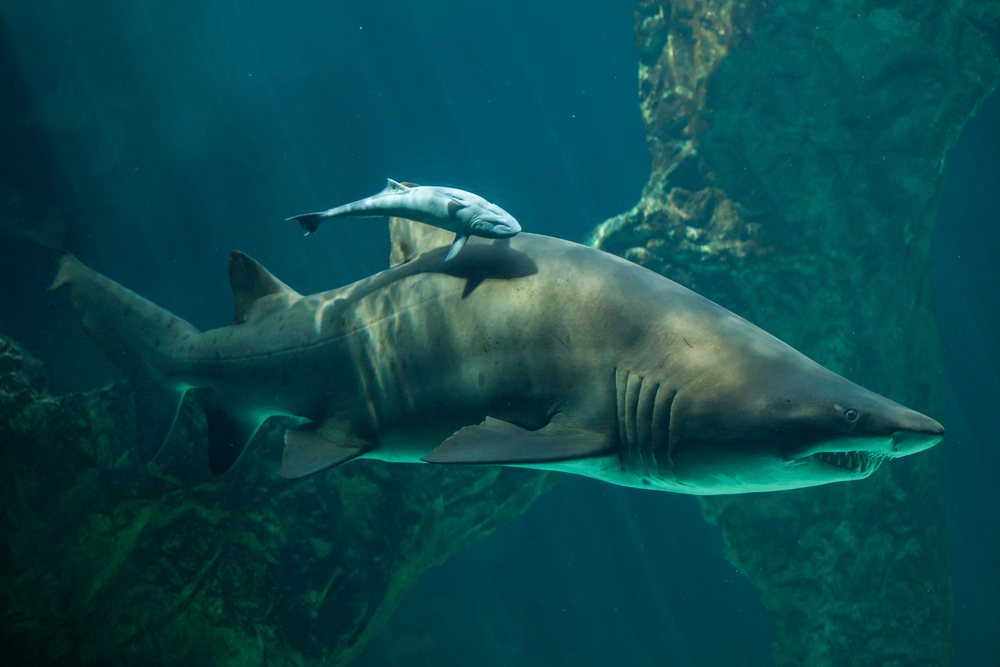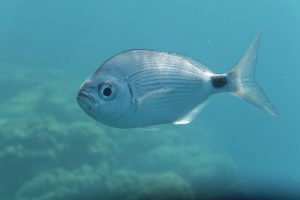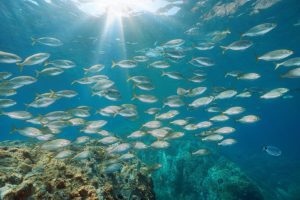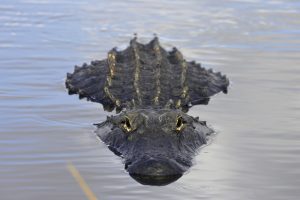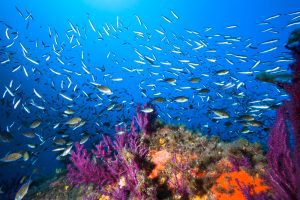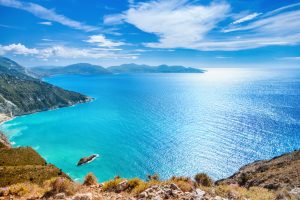You may automatically visualize sunny beaches with clear, blue waters when you think of the Mediterranean Sea.
Besides offering quality relaxation spots, the Mediterranean Sea has an abundance of various habitats, ranging from coral gardens to sandy bays.
Its fish-teeming and temperate waters make the sea a perfect hunting ground for marine predators, including sharks.
The Mediterranean Sea is home to 47 shark species, including popular ones like the scalloped hammerhead, blue shark, thresher shark, great white shark, and grey nurse shark.
However, only 15 of the 47 species present in the Mediterranean can be dangerous to humans. With the sea spanning Asia, Africa, and Europe, you can access it via different countries to try to spot these famous yet rarely seen predators.
Table of Contents
What types of sharks are in the Mediterranean Sea?
Although the inland sea hosts 47 shark species, most reside so deep in the waters that you will seldom see them. Nonetheless, they occasionally come closer to the surface to offer rare viewing opportunities for anglers and tourists.
Researchers and observers who actively search for them offer more reports of their sightings since they go to depths that the casual swimmer does not even consider.
The following are some of the most recognizable species you can find in the Mediterranean Sea:
1. Great white shark
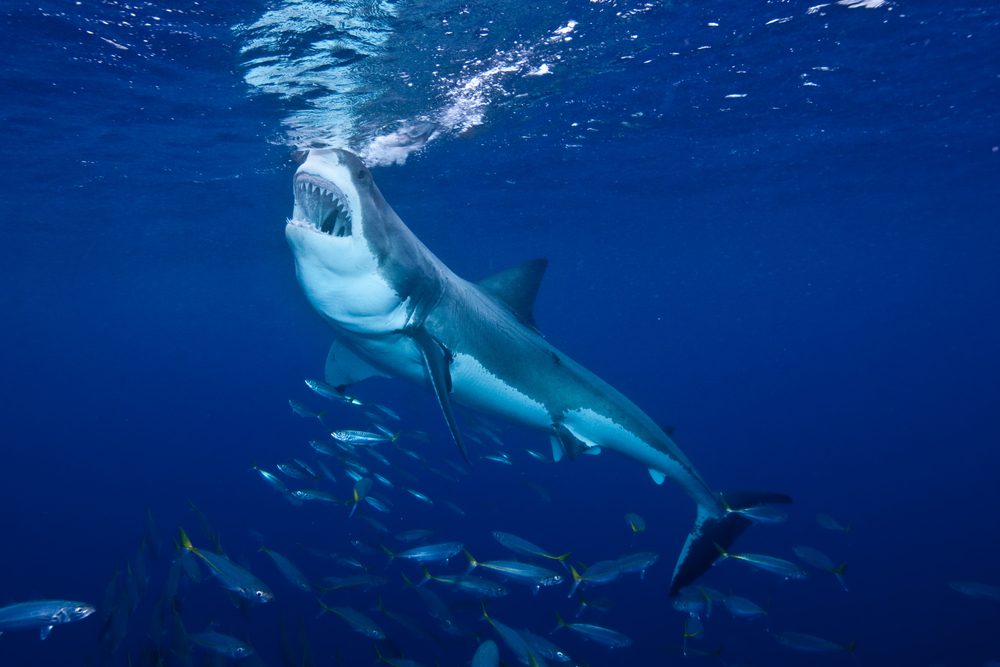
Many people immediately think of the great white shark when the subject of marine predators comes up. They are the most dangerous sharks worldwide and responsible for the most unprovoked attacks on humans.
Consequently, most shark-related fatalities come from an attack and bite by the great white shark. Despite its reputation, you can breathe a sigh of relief since the odds of getting a shark bite are 1 in 3,748,067.
In addition, they mostly live in depths of around 1,200 meters, making it almost impossible to run into them during a casual visit.
They feature sizeable builds since they can weigh up to two tons, grow to 20 feet in length, and swim to speeds of up to 16 miles per hour.
Great white sharks get their name from their appearance of a white underside. They mostly have a grey or blue-brown dorsal area, with the coloration merging to make it easier to hunt.
It is difficult for prey to spot the shark outline when seeing the shark from below, whereas the darker dorsal shade blends with the sea from above.
2. Blue shark
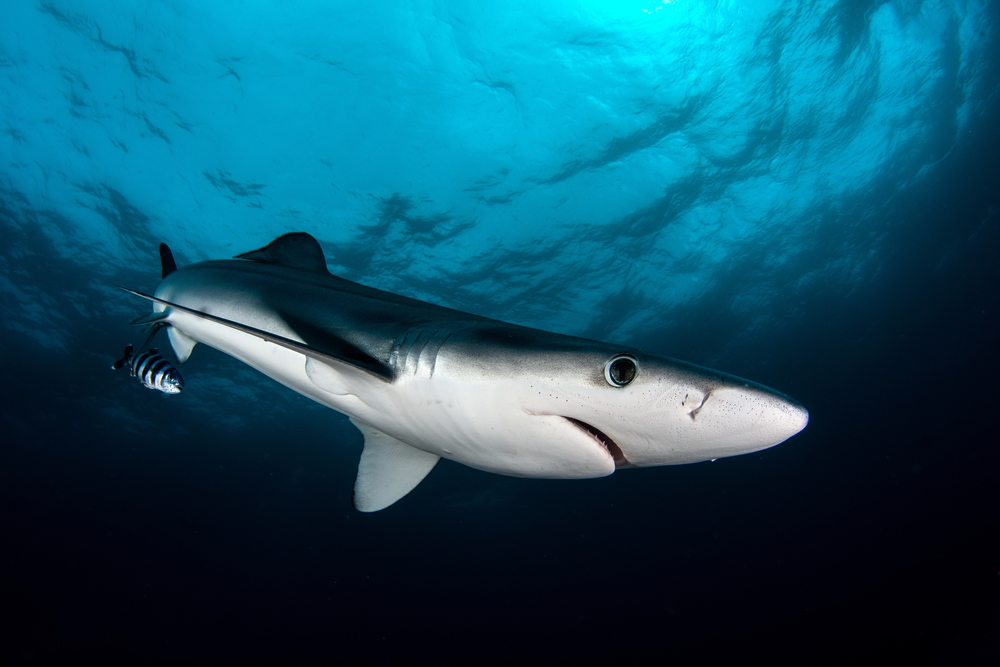
Even though blue sharks generally like the deeper and slightly cooler waters, they are among the most common species in the Mediterranean Sea.
Regular reports of their sightings occur on several beaches in Greece, Spain, and France, especially in the Corsica region. They can also venture near the shores when they are ill, lost, young, or injured.
They come in huge sizes that reach 12.5 feet from end to end, resulting in an instinctual fear of the species. These sharks have light bodies with pectoral fins and countershading.
Thus, they feature a slender white underside and lighter sides, with their dorsal having a deep blue shade.
A blue shark typically swims very slowly at the water surface but can reach top speeds of approximately 43 miles per hour at depths of 350 meters.
They rarely bite humans, with reports showing around 13 bites from 1580 to 2013. These sharks mainly feed on small fishes, carcasses, and invertebrates.
3. Spinner shark
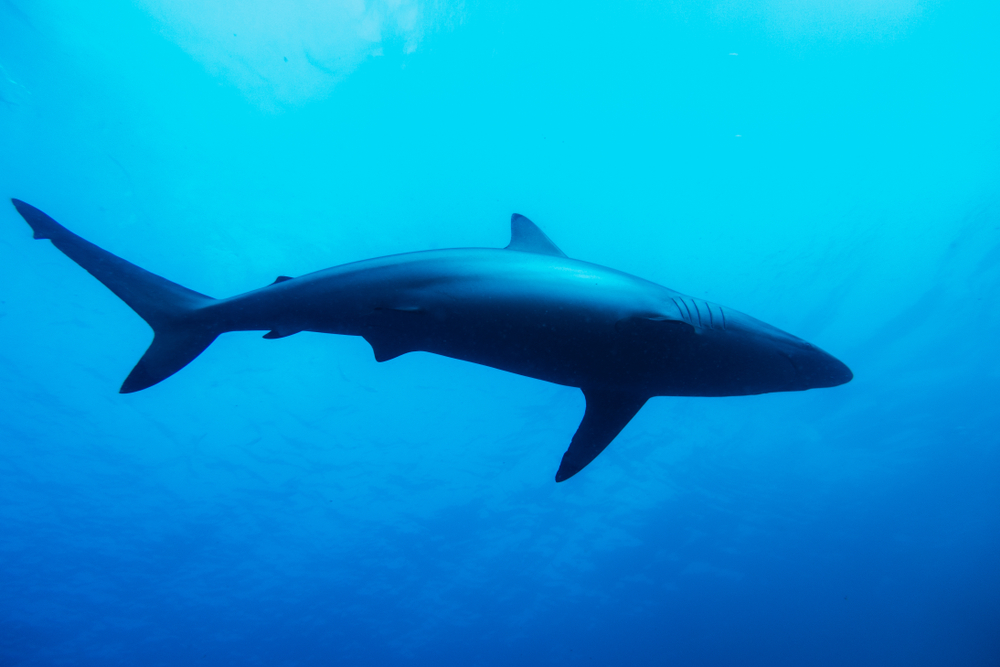
These species love to stay in shallow and warm waters not exceeding 100 meters from the seabed to the surface. They share similar bodily characteristics to the slightly smaller blacktip sharks, making it harder to identify them.
Nevertheless, their proximity to the coastline makes them a relatively easy catch, contributing to their decreased population in the sea.
The spinner shark derives its name from the quick, twisting motions it features when in full attack mode.
It rarely applies this technique to humans since it generally does not see large mammals as potential prey. Hence, the rare occasions of an attack from a spinner shark involve the species getting agitated with spearfishers around freshly caught fishes.
4. Blacktip shark
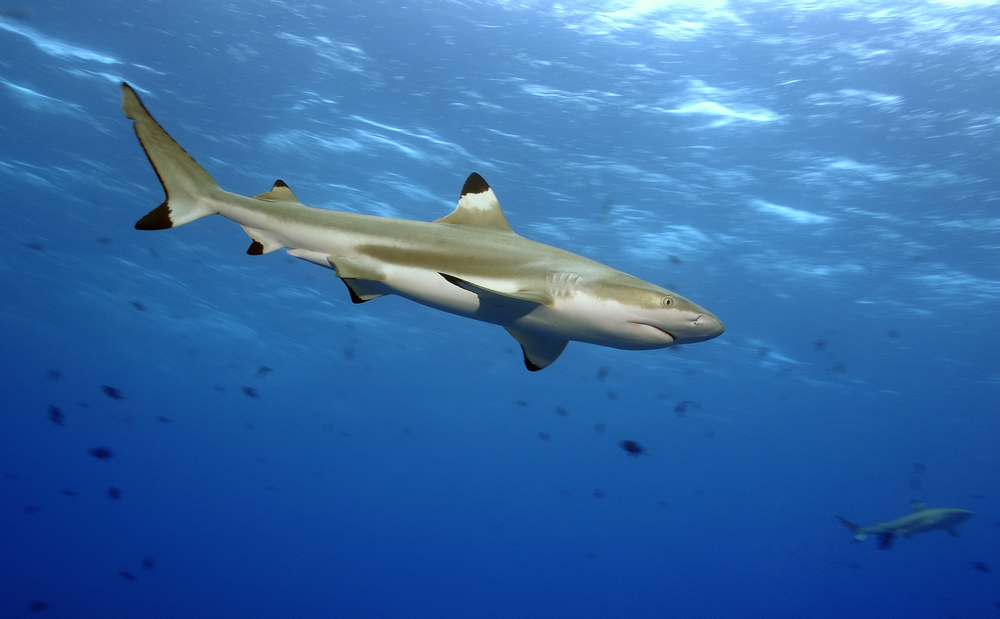
The blacktip shark is another species that enjoys living in shallow waters not exceeding 30 meters in depth. For this reason, you can often find them near lagoons, cover, and coral reefs rather than in the open sea.
These preferences make them the most commonly spotted shark species in the Mediterranean Sea.
You can mostly see them around Egypt and Israel in the Easter Med after migrating via the Suez Canal from the Indian Ocean and the Red Sea.
The distinctive black edge on their fins and sometimes on their tails is their most recognizable feature. They grow to four to five feet and are very athletic and often jump into the air to catch their prey.
These species do not have a history of being aggressive or dangerous to humans. Some reports only describe them as being overly curious about scuba divers.
They rarely bite and are generally timid and thus more likely to swim away from you.
5. Hammerhead shark
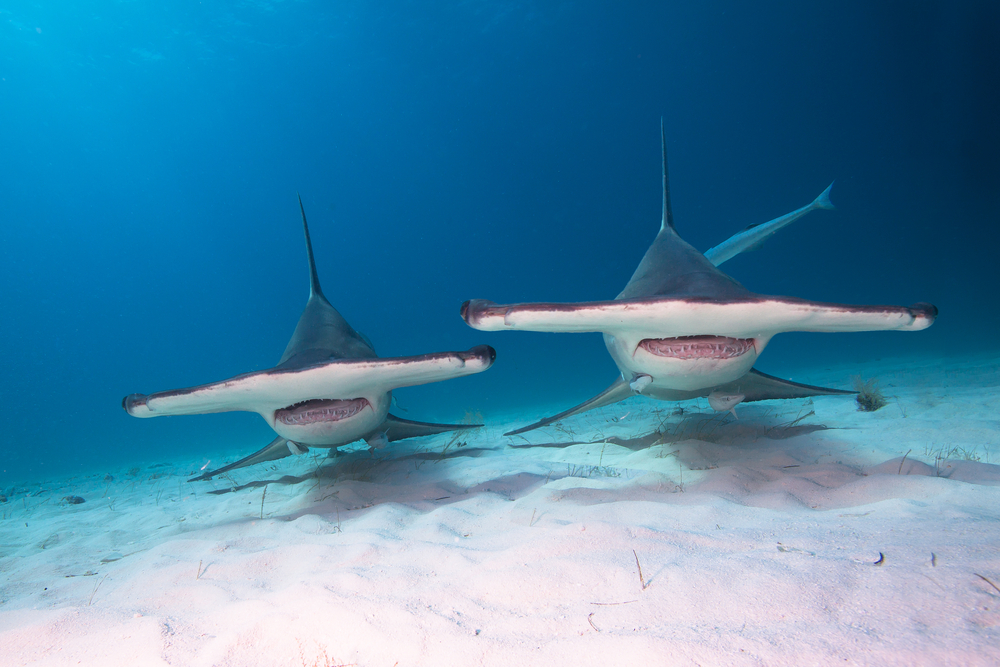
You can find three hammerhead species residing in the Mediterranean Sea, including the scalloped, smooth, and great hammerhead. They all possess the same flat heads but differ in the shape of the front edge.
The scalloped hammerhead has ridges like a scallop shell’s edge, whereas the great hammerhead has a straight edge. A smooth hammerhead has a curve like a crescent.
These distinctions will help you to tell them apart when viewing them during your voyage along the Mediterranean Sea.
The scalloped grows to 14 feet, the smooth to 16 feet, and the great hammerhead reaches 20 feet from end to end.
Hammerhead sharks are among the most aggressive apex predators in the sea, so you want to take any photos from a great and safe distance.
They can get curious around divers and engage in unprovoked attacks, though these rarely end in death for the victims.
6. Catshark
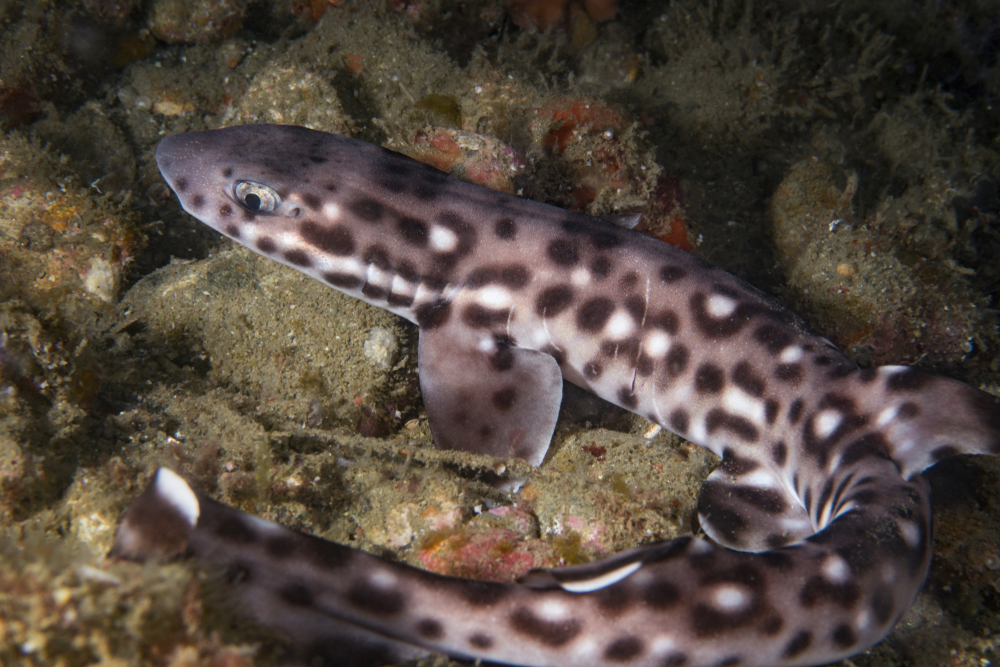
Catsharks are among the smaller and less threatening species you can spot on the Mediterranean Sea. These waters are home to three catshark species, including the black-mouth, Atlantic, and small-spotted kinds.
The first two species reside in great depths, making it unlikely that a diver or casual swimmer will ever see one.
In contrast, the small-spotted catsharks prefer shallower waters, enabling you to find them around sandy seabeds and reefs. They also do not possess the typical fin and body shape of a shark.
These sharks grow up to 3 feet long and feature slender builds with a soft dorsal fin positioned towards their tail. Apart from this, they have pale, brownish-grey skin with darker spots to help you identify them.
Catsharks are harmless to humans, meaning you can look at them and take memorable photos without getting anxious about an attack. Notably, you can snorkel in Malta to spot catshark in one of the country’s conservation areas.
7. Shortfin mako shark
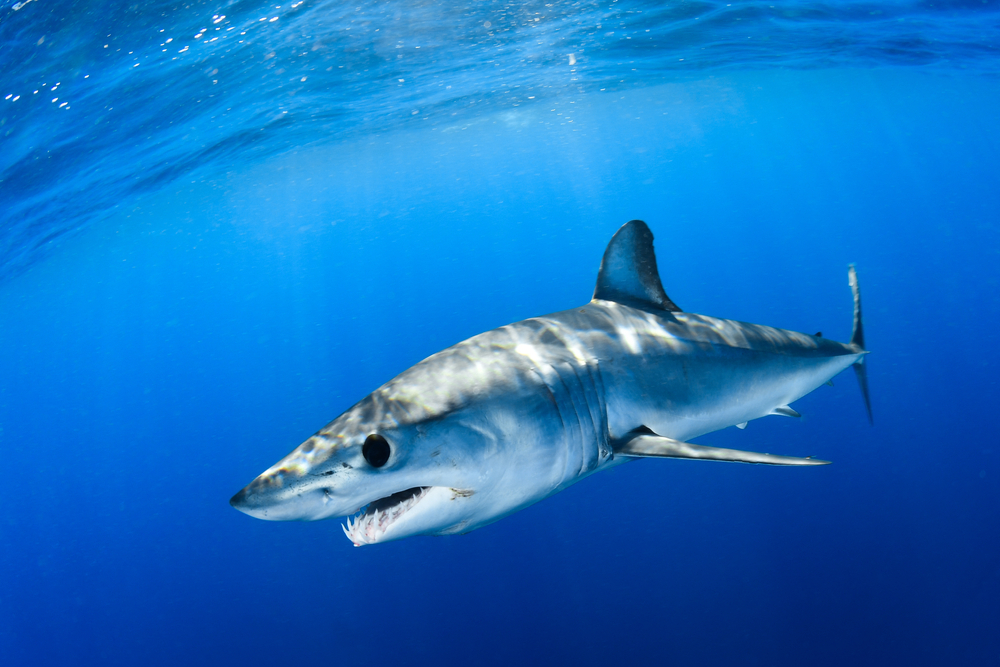
This shark features an ultra-streamlined yet stocky and muscular body. It can comfortably reach speeds of up to 45 miles per hour, meaning the shark can easily whiz by you without you ever knowing you had a predator nearby.
The increased hunting by big game anglers resulted in the shortfin mako shark joining the ICUN list of endangered species.
In addition, this move led the Spanish government to ban commercial fishing of makos in their North Atlantic territory. These species also enjoy temperate and tropical waters, enabling you to find them along the Mediterranean Sea.
After their migration, you can spot them in other areas like the South Pacific and the Gulf of Mexico.
Mako sharks can manage twists and flips in the air, making it common for people to mistake them for dolphins at a distance.
Even though they are not famous for being overly aggressive, some reports show that they attacked scuba divers and fishing ships.
Some divers also witnessed these species blowing bubbles and conducting predatory circles in the water to confuse prey.
How do sharks reproduce and develop?
Unlike typical fish that spray their eggs and sperms in water columns for fertilization, sharks reproduce sexually via internal fertilization.
For example, the blue sharks give birth to about 130 pups per litter, with an average of 25 to 50 pups in a yolk sac-placenta. Their gestation period takes between nine and twelve months, with their lifespan reaching up to 20 years.
Besides this, the thresher species feed their developing embryos with fettered eggs provided by the mothers. The females produce two to seven newborns after a nine-month gestation period.
They mature slowly to reach sexual maturity between eight and ten years, living for 20 years or more.
Notably, different sections of the Mediterranean Sea offer optimal conditions for sharks to breed. For example, the Strait of Sicily is rich in food, and great whites often visit the area to give birth and take care of their offspring.
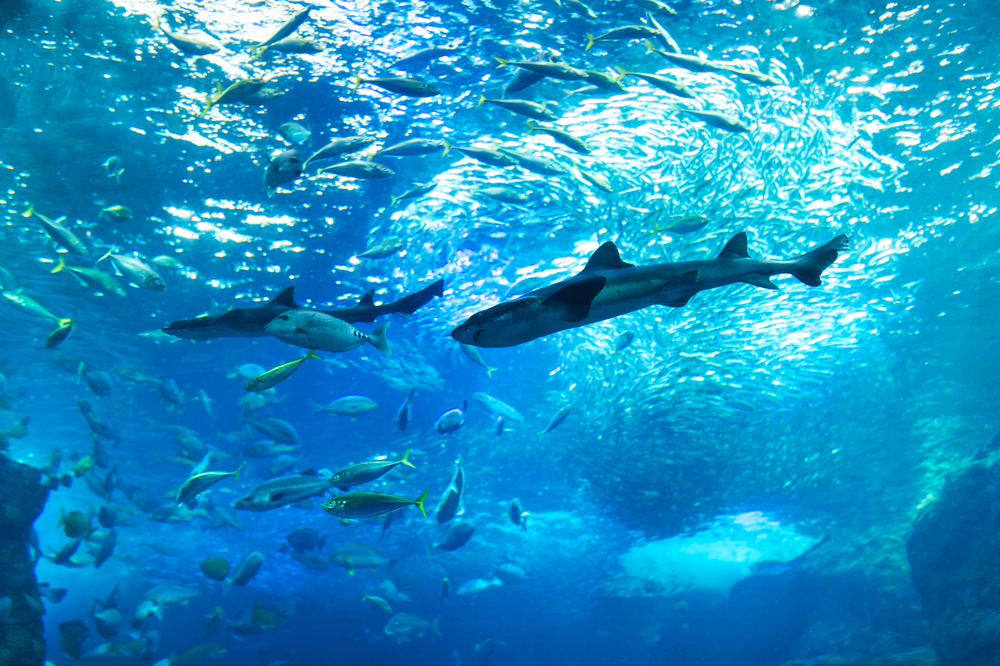
As a result, you have the best chance of spotting these rare species by visiting the Strait during summer.
Are shark attacks common in the Mediterranean Sea?
Most sharks, including the rightly feared great white shark, only bite human beings to verify what they are.
People bitten by sharks often report that the attack came as a surprise, meaning the sharks aggressively approached them after mistaking them for their usual prey.
Many smaller sharks also only bite when captured on fishing lines or nets.
The size of a great white shark ensures that the species can cause serious damage from a bite, which can be fatal or result in serious and permanent damage.
Although it can be tempting to let your guard down around the smaller sharks, it is best to remember that they have powerful teeth designed for tearing or gripping.
Hence, you want to treat all shark species you encounter with utmost caution.
Despite their fearsome reputation, many sharks in the Mediterranean Sea pose no danger to humans since they live in great depths.
Nonetheless, it is better to be on the lookout just in case when staying by the beach or partaking in watersports.
Interestingly, you are more likely to die while taking a selfie than in a shark attack.
Why are shark populations decreasing?
The biggest problem facing sharks in the Mediterranean Sea and the world is overfishing. Fishing enthusiasts catch these species for various reasons.
Some fish them for food, while others target them to boast about capturing a rare and fearsome shark. For instance, big game fishermen catch the highly prized blacktip sharks due to their speed and athletic nature.
These anglers enjoy attempting to reel them in from the deep, taking advantage of the sharks’ tendency to leap out of the water after their prey.
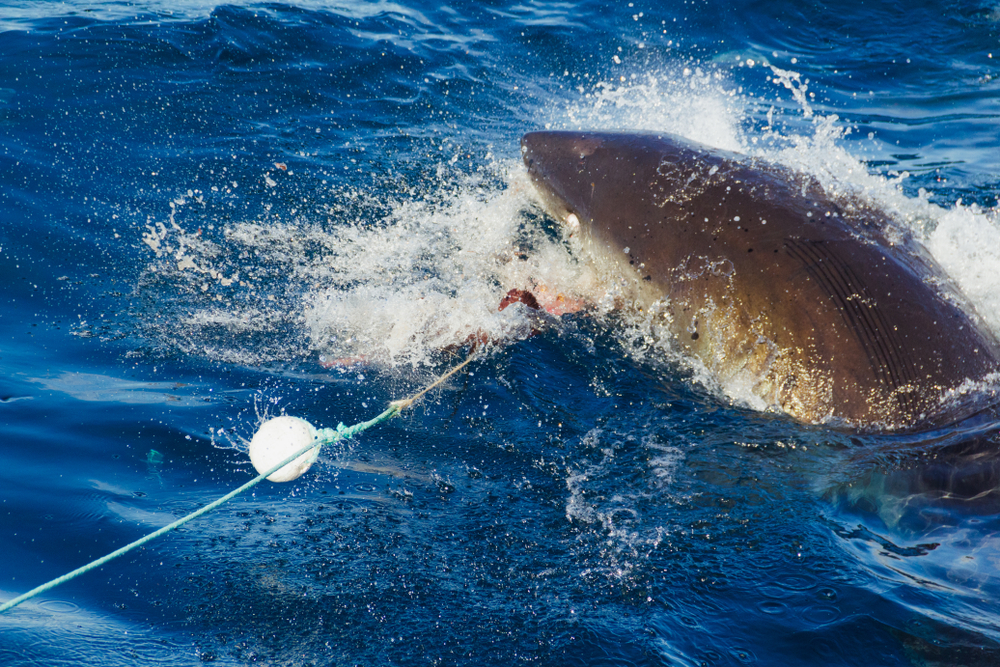
In addition, hunters value spinner sharks since people in Southeast Asia use their fins and liver oils in their soups.
There were approximately 57 unprovoked shark attacks globally in 2020. Yet humans cause over 100 million shark deaths worldwide each year.
How do humans endanger sharks?
Humans threaten shark existence in four main ways: poaching, accidental catch, illegal hunting, and pollution.
I. Poaching
Poachers target sharks for their body parts highly prized by some markets. For instance, they illegally trap sharks like hammerheads and cut their fins before letting them back into the water.
Afterward, these sharks sink to the bottom of the sea and die.
II. Accidental catch
Many coastlines feature net setups to help increase human safety by keeping the sharks away from the beaches. Ironically, this setting traps many sharks, leading to several shark deaths.
Moreover, anglers’ longlines and trawlers often accidentally catch the species and cause their death before they can safely escape back into the sea.
III. Illegal hunting
Some people intentionally target sharks to attain a set of jaws as a trophy. They hunt them for sport and do not pay attention to the restrictions placed by authorities to preserve certain species.
Many hunters often seek the protected species to add to their collections.
IV. Pollution
Human-made debris, especially metal and plastic waste, finds its way into the sea. People also typically dump toxic waste into the sea and increase water pollution. These materials collect in sharks’ bodies and ultimately kill them.

